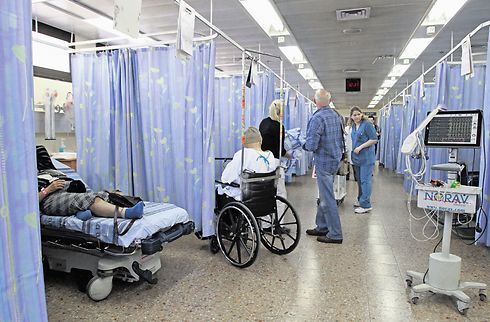
Fewer hospital beds, higher occupancy rate
Photo: Hagai Dekel, Nitzan Dror, Uri Davidovich
The private spending on healthcare in Israel is among the highest in OECD countries, amounting to 39% of total health expenses compared to an average of only 27 percent in members of the Organisation for Economic Co-operation and Development.
According to the two reports, the numbers of hospital beds in Israel is relatively low compared to other OECD countries (third from the bottom) – 1.9 hospital beds per 1,000 people, compared to an average of 3.3 hospital beds in OECD countries.

The OECD released its 2015 Health Statistics report for its 34 member countries on Tuesday. Following the report, the Health Ministry's Economic and Strategic Planning Administration published its own report on Israel's health system.
Healthy Society
Dr. Itay Gal
We are surrounded by enemies and threats, face a difficult economic situation and are under a lot of pressure, yet Israel is one of the countries with the highest life expectancy; a psychologist, a sociologist and a geriatric physician try to explain why.
Despite the shortage, the hospital beds occupancy rate in Israel – 94.1 percent – is the highest in the organization, compared to an average of 76.1 percent among OECD members.

Only 1.9 hospital beds per 1,000 people in Israel, compared to an average of 3.3 hospital beds in OECD countries (Photo: Assaf Friedman)
The number of MRI machines per 1 million residents in Israel is 3.1, compared to the OECD average of 13.1.
The number of nurses per 1,000 people in Israel is also relatively low, standing at 4.9 in 2013 compared to an average of 9.8 among OECD countries.
Despite these figures, life expectancy in Israel is still higher than the OECD average.
"The figures point to the need to continue investing in the health system's advancement," Deputy Health Ministry Yakov Litzman said in response to the report.
















